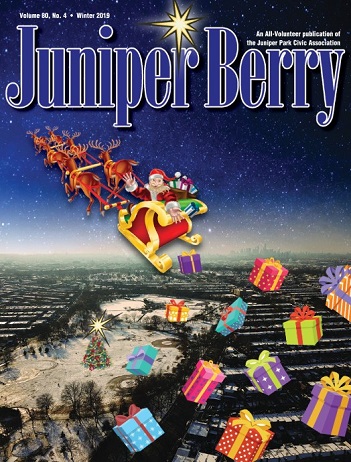Washington Irving is best known as the author of short stories such as The Legend of Sleepy Hollow and Rip Van Winkle. But not many realize that he was also the progenitor of our modern-day Santa Claus and introduced many Christmas traditions to America.
The New York Historical Society was founded in 1804 as NYC’s first museum and adopted St. Nicholas as its patron. The city was in the midst of celebrating its Dutch history, and St. Nicholas was of particular importance to the Dutch. St. Nicholas or “Sinter Klaas,” as the Dutch called him, had always been portrayed as someone who bestowed small gifts on well-behaved boys and girls on the eve of the 6th of December, his feast day. The real St. Nicholas was a bishop, and up until that time had been depicted as a tall figure, wearing vestments and carrying a staff.
In 1809, Irving became a member of the historical society and was amused by their fascination with St. Nicholas. He wrote the widely read satirical A History of New-York from the Beginning of the World to the End of the Dutch Dynasty and transformed Sinter Klaas into what the New York Public Library describes as “a short, stout, merry, pipe-smoking Dutchman, dressed in traditional colonial attire.” Irving’s Dutch history of New York included the following passage:
“And the sage Oloffe [Van Kortlandt] dreamed a dream—and, lo! the good St. Nicholas came riding over the tops of the trees, in that self-same wagon wherein he brings his yearly presents to children. And he descended hard by where the heroes of Communipaw (NJ) hadmade their late repast. And he lit his pipe by the fire, and sat himself down and smoked; and as he smoked the smoke from his pipe ascended into the air, and spread like a cloud overhead. And Oloffe bethought him, and he hastened and climbed up to the top of one of the tallest trees, and saw that the smoke spread over a great extent of country—and as he considered it more attentively he fancied that the great volume of smoke assumed a variety of marvelous forms, where in dim obscurity he saw shadowed out palaces and domes and lofty spires, all of which lasted but a moment, and then faded away, until the whole rolled off, and nothing but the green woods were left. And when St. Nicholas had smoked his pipe, he twisted it in his hatband, and laying his finger beside his nose, gave the astonished Van Kortlandt a very significant look, then mounting his wagon, he returned over the treetops and disappeared.
And Van Kortlandt awoke from his sleep greatly instructed, and he aroused his companions, and related to them his dream, and interpreted it that it was the will of St. Nicholas that they should settle down and build the city here… The name most current at the present day, and which is likewise countenanced by the great historian Vander Donck, is Manhattan, which is said to have originated in a custom among the squaws, in the early settlement, of wearing men’s hats, as is still done among many tribes.”
Irving cheekily had Dutch Communipaw residents moving on and settling Manhattan based on Oloffe Van Kortlandt’s dream of St. Nicholas. Of course, that’s not how it happened (and that last line is a really obvious joke). But the language used in the description of St. Nick in Oloffe’s dream is familiar. He smokes a pipe, distributes gifts to children, arrives in a flying wagon and lays a finger aside his nose before ascending up into the night sky. “A Visit from St. Nicholas” was published in 1823 and whether you believe it was written by Clement Clarke Moore or Major Henry Livingston, Jr., it’s no doubt that the author was inspired by Washington Irving’s description of the right jolly old elf published 14 years before. That poem was responsible for linking St. Nicholas to Christmas and has led to subsequent depictions of Santa Claus up to the present day.
Irving also brought Christmas traditions to America after experiencing them during a visit to England. Christmas wasn’t widely celebrated in the States during his time, which disappointed Irving, so through his writings he introduced America to rituals such as Christmas caroling, the wassail bowl, hanging mistletoe and burning a Yule log. His Christmas stories were published in 1820 in his book The Sketch Book of Geoffrey Crayon. According to Irving biographer Andrew Burstein, “Within a decade, New Yorkers were greeting each other with Christmas wishes, and stores on Broadway extended their hours to accommodate shoppers.”
At one point, Irving served in an official capacity as U.S. Ambassador to Spain, but a huge part of his legacy is that of unofficial ambassador of Christmas.




